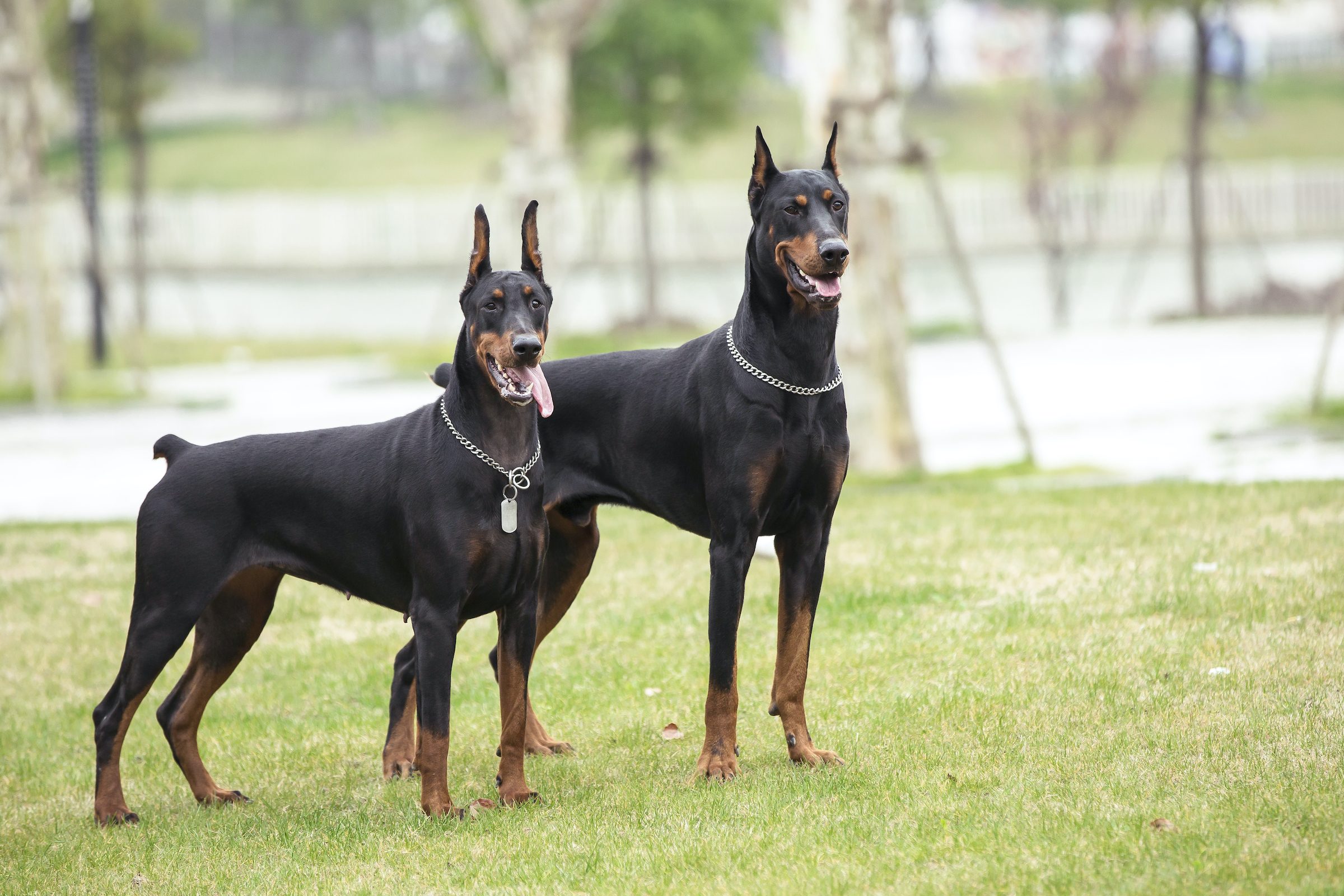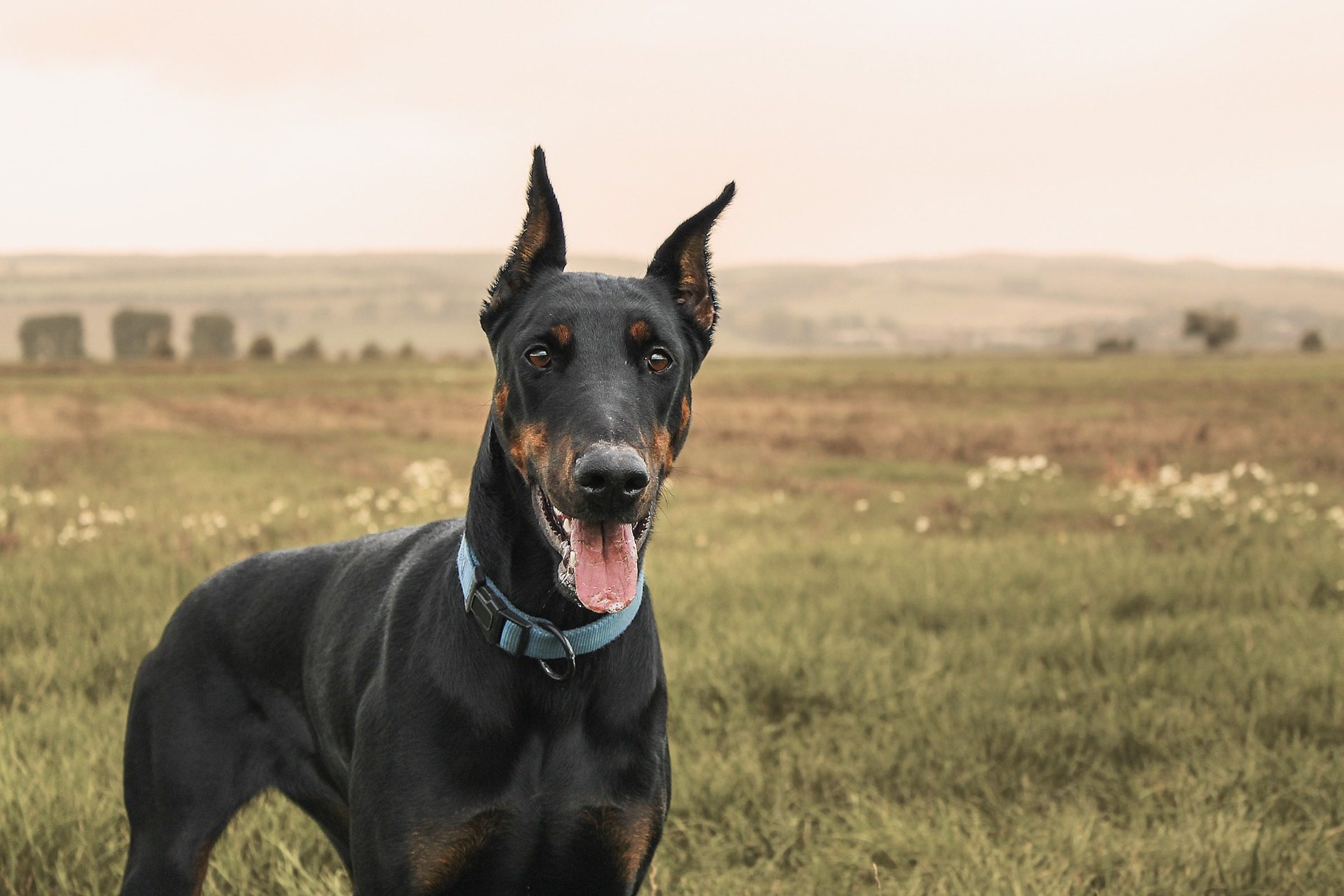Training your Doberman pinscher might seem intimidating — they are a smart and active breed, after all. The truth is, though, that Dobies are incredibly eager to please, so you’re likely to have a dog who’s even more excited to learn than you are. Just don’t forget the treat bag!
With some forethought and the right mindset, Doberman pinscher training can be a breeze. It might take some practice to be as clear and concise as possible when communicating with your pup, but in the end, this will make a world of difference for you both. When in doubt, some pets and a delicious snack will definitely help get the message across.
Have an alpha demeanor
According to the American Kennel Club, Dobermans are incredibly smart and eager to please, though they can get rowdy and even destructive when raised or trained inconsistently. In addition to being full of excess energy, this breed can be pushy when they’re particularly motivated — or unmotivated.
To help combat any Dobie stubbornness, make sure she understands that you’re the boss. It’s not about being harsh or loud, though; it’s about letting your dog know that you’re the one who makes the decisions for you both. Once your dog has mastered a basic obedience command like “sit” or “wait,” incorporate that training when feeding your dog or letting her out to potty. When she has to earn her favorite things, she’ll understand that you’re the one who calls the shots.

Work with their desire to please
Because Dobermans are so naturally motivated to please their owners, many Dobie parents find that training comes pretty naturally. The keys to keeping your pinscher engaged in training are thorough praise and appropriate training intervals. Make sure to find a training treat that’s both healthy and enticing to your dog — though these are no substitute for verbal praise and lots of loving pets!
Although Dobies are often eager for training, too much practice can encourage your pup to act out. Start with five to 10 minutes of training per session when you’re starting out, then build up according to what feels right for you both.
Start with the basics
Dobermans are excited to please their owner and earn a reward, so start with the easiest commands to give them an opportunity to succeed. This builds their confidence, too! Learning the essentials will make some of the more advanced commands even easier since complex moves often combine and build off the basics.
“Sit” is the perfect place to start. Grab a treat and hold it in front of your dog to get her attention, then slowly raise your hand (and the treat) above your pup’s head. To keep an eye on the treat, your dog will naturally lift her head and eventually sit. Don’t forget to praise and reward her! Once you go over it a time or two, incorporate the command word “sit” every time you repeat the trick.
Learn a release command
One helpful training tool for pups who love to please is the “release” command. This command essentially tells your dog that you’re done asking her for things and she can go back to just being a dog.
You would use this command after telling your Dobie to “sit,” “stay,” or just about anything else. In fact, you might already have a release command without even knowing so. A lot of pet parents tell their pups “Okay!” when it’s time to grab a treat after training — it’s exactly the same idea!

Be consistent
Doberman pinschers are smart and loyal, but they’re creatures of habit, too. Routines will help keep them relaxed and happy … as long as you don’t come home late, that is! Falling off routines is one common cause of a wily Dobie, though confusion can make them lash out, too.
To combat this, stay as consistent as possible during training. Short, frequent sessions are predictable and just long enough to keep their minds engaged for learning. When actively training, be sure to remember your usual command words and don’t expect your pup to magically pick up on anything new.
When it comes to training Doberman pinschers, most owners are very lucky: All it takes (sometimes) is an alpha demeanor and clear, consistent practice. Of course, every pup is different, so it’s fruitless to expect every Dobie to act just like the rest. It’ll take some time to find what works for you, but try to have some fun in the process!



